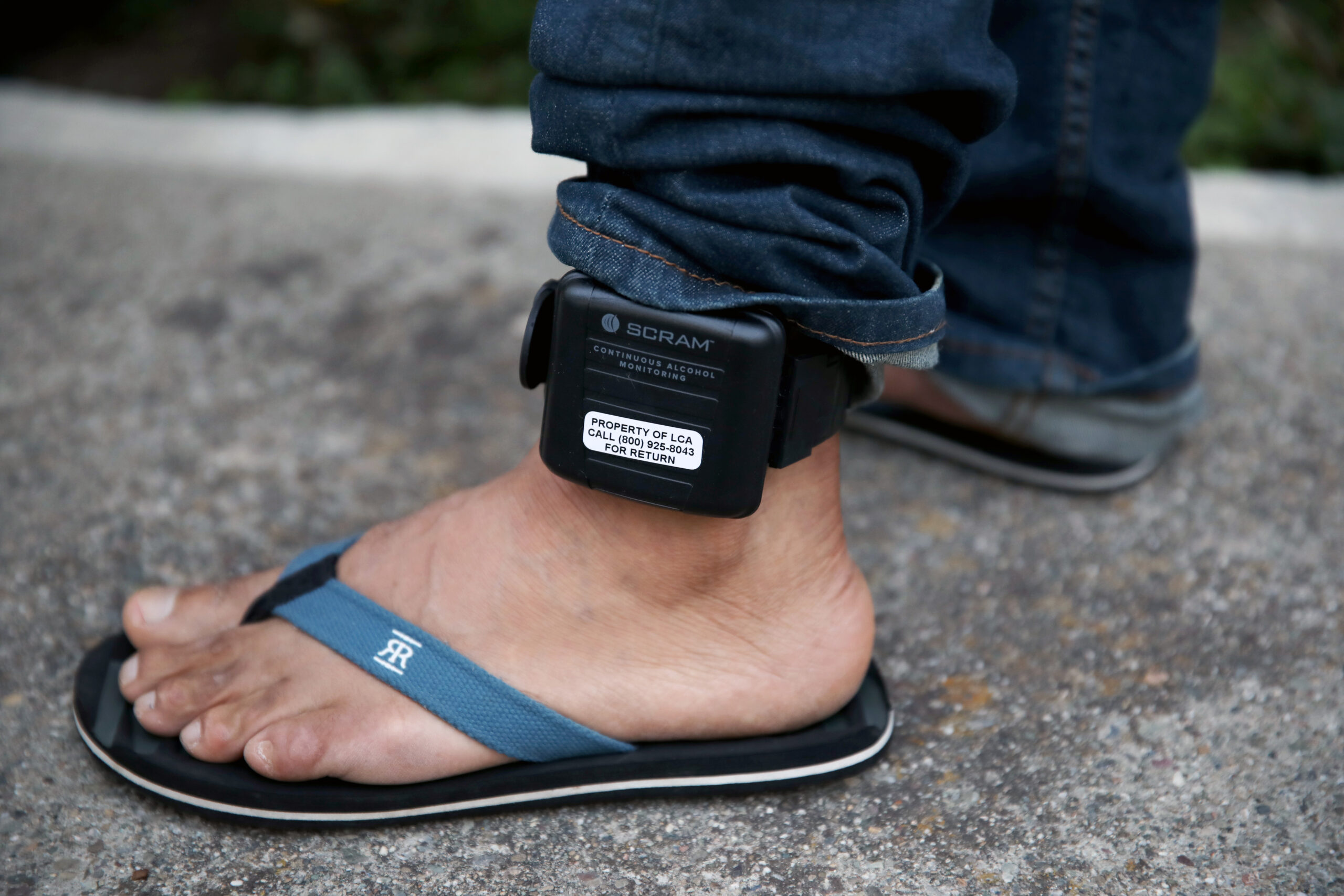A majority of criminal defendants in San Francisco are released before trial. But data released by the Sheriff’s Department show that one particularly common alternative to jail custody—electronic monitoring—may not be an effective deterrent against further risky behavior.
As of July 31, there were 328 active clients on electronic monitoring in San Francisco, and 126 clients on “warrant status”—meaning they removed their ankle monitors or otherwise didn’t comply with the terms of their release. Those figures were cited in records provided to Supervisor Rafael Mandelman, who called for reform of the program alongside Mayor London Breed on Tuesday.
“One out of every three people on pretrial electronic monitoring in San Francisco removes their ankle monitor or commits other crimes,” said Mandelman. “If one out of every three cells in our jail had broken locks, we would do something about it.”
The Sheriff’s Department, which runs San Francisco’s jails and electronic monitoring program, reported that between June 2020 and May 2021, there were 644 individuals who violated the terms of their release at least once. Of those, 263 did so multiple times.
In a letter to the Sheriff’s Department, Mandelman wrote that he had grown concerned about the effectiveness of ankle monitoring in part because of high-profile incidents in the past year, such as the unprovoked stabbing of a 94-year-old woman in June, in which the suspect had been released on an ankle monitor. Mandelman also cited an individual in the Castro District who “clearly suffers from serious mental health issues,” and had been released to the public despite an arrest for assault and other dangerous incidents.
“My concern is that this individual’s story is not unique and that there is a dangerous and disturbing pattern of people charged with serious crimes and being released on electronic monitoring, failing to meet the terms of their release and being released on electronic monitoring again,” Mandelman wrote.
According to a spreadsheet provided by the Sheriff’s Department, some of the most common charges for those rearrested while on electronic monitoring included assault with a deadly weapon, drug possession, domestic violence, burglary and driving under the influence.
Mandelman asked the city’s Budget & Legislative analyst to research the effectiveness of electronic monitoring in San Francisco compared to other counties, and also asked the Adult Probation Department, which runs post-sentencing electronic monitoring and other probationary programs, for more information.
Mayor Breed also asked the Sheriff’s Department and Adult Probation to develop a set of recommendations for how to strengthen electronic monitoring.
The number of individuals on electronic monitoring or other alternative sentencing has surged in recent years, driven in part by two landmark court rulings in California, called the Buffin and Humphrey decisions, which restricted the use of cash bail and placed stricter conditions on pretrial detention. In June 2016, there were 796 individuals on pretrial release and in alternative sentencing, according to the Sheriff’s Department. By June 2021, that number had grown to 1,829, equivalent to 69% of individuals who were booked for a crime in San Francisco.
A study released this year by California Policy Lab also suggested that rearrests of individuals on pretrial release are common.
The study examined an algorithm called the Public Safety Assessment, which San Francisco courts use to evaluate how likely a defendant is to reoffend and to show up for court dates. Those risk assessments are administered by Pretrial Diversion Project, an alternative sentencing nonprofit that has contracted with the Sheriff’s Department since 1976. Judges, public defenders and district attorneys then use those recommendations to make decisions on whether a suspect should be released from custody.
Looking at cases between 2016 and 2019, however, California Policy Lab found that 55% of criminal defendants were rearrested during the pretrial period, either in San Francisco or other jurisdictions, and that riskier defendants were more likely to be rearrested.
In response to those findings, Supervisor Catherine Stefani called on the City Attorney to draft legislation that would require greater transparency in how risk assessments are used in courts, and in overall pretrial outcomes, including for those on electronic monitoring. Stefani’s office expects that legislation to be finalized before the end of this year.
